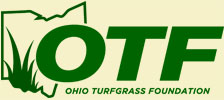What is the Aim of Perimeter Pest Control?
Perimeter pest control is a preventive approach designed to protect your home or business from unwanted pests by addressing vulnerabilities at the outer edges of the property. The primary goal is to stop pests before they have the chance to invade the interior, ensuring a pest-free living or working environment. This method targets areas like cracks, gaps, and entry points, helping to maintain comfort, health, and property integrity.
Purpose of Perimeter Pest Control
The main aim of perimeter pest control is to block pests from entering the property, creating a protective barrier at the outer perimeter. This approach offers several key benefits:
- Preventing Infestation: By focusing on the exterior of the building, perimeter pest control stops pests before they enter and infest the home.
- Minimizing Exposure: It reduces the risk of pests like mosquitoes, rodents, and termites, which can be harmful to health or property.
- Maintaining Comfort: Prevents pests from disrupting your indoor living or working spaces, ensuring peace of mind.
- Reducing Indoor Pesticide Use: Tackling pests outside reduces the need for chemicals inside, protecting both your family and the environment.
Methods of Perimeter Pest Control
Effective perimeter pest control involves a combination of methods that prevent pests from entering while targeting external infestation sources. Common strategies include:
- Inspection and Identification: The first step is inspecting the property for pest signs like trails, nests, or damage to detect potential entry points.
- Sealing Entry Points: Sealing gaps, cracks, and holes around windows, doors, and vents ensures that pests cannot enter through weak spots.
- Exclusion Barriers: Installing physical barriers such as door sweeps, screens, and weather stripping helps keep pests from gaining access to the home.
- Chemical Treatments: Low-toxicity pesticides are sometimes applied along the perimeter to repel pests, minimizing the risk of interior contamination.
- Natural and Organic Methods: Eco-friendly repellents like essential oils or diatomaceous earth can help keep pests at bay without the need for harmful chemicals.
- Traps and Baits: For rodents and other persistent pests, traps and baits can be placed around the perimeter to capture and eliminate them before they invade.
- Ongoing Maintenance: Regular follow-up treatments and inspections are essential to ensure the perimeter stays secure from future infestations.
Benefits of Perimeter Pest Control
Investing in perimeter pest control offers several advantages, helping to maintain a pest-free property:
- Long-Term Prevention: By focusing on proactive measures, perimeter pest control reduces the need for frequent indoor treatments and ensures lasting protection.
- Health Protection: Pests such as rodents and mosquitoes can spread diseases. Preventing them from entering the home reduces exposure to these health risks.
- Property Protection: Pests like termites and rodents can cause significant damage to structures. Preventing them from accessing the property helps protect your home or business from costly damage.
- Enhanced Comfort: Managing pests outside ensures that you can enjoy both indoor and outdoor spaces without the irritation of unwanted guests.
- Improved Air Quality: Reducing pests that trigger allergies, like dust mites and cockroaches, helps maintain healthier air quality inside your home.
- Eco-Friendly Options: Many perimeter pest control methods focus on natural, chemical-free solutions that are safe for the environment and your family.
Choosing a Pest Control Professional
While DIY methods can provide temporary relief, hiring a professional pest control company ensures more thorough, long-lasting results. Here’s what to look for when choosing a pest control expert for perimeter pest management:
- Experience and Reputation: Opt for a company with a strong track record and positive customer reviews, ensuring they understand local pest issues.
- Licensing and Certifications: A licensed and certified pest control provider guarantees that they follow industry standards and safe practices.
- Tailored Plans: A good pest control professional will inspect your property and offer a customized plan that addresses your property’s specific needs.
- Integrated Pest Management (IPM): Choose a provider that uses IPM techniques, which combine biological, physical, and chemical methods for a more holistic approach to pest control.
- Cost and Warranty: Ensure the company provides transparent pricing and a warranty for their services, offering peace of mind and financial protection.
- Customer Service: A responsive and communicative pest control provider will keep you informed and ensure that any concerns are promptly addressed.
Conclusion
Perimeter pest control is a crucial step in maintaining a pest-free environment by preventing pests from entering your home or business. Through proactive methods like sealing entry points, using barriers, and applying targeted treatments, perimeter pest control offers long-term protection, health benefits, and peace of mind. Whether you choose to manage it yourself or hire a professional, ensuring the perimeter remains secure is key to keeping your indoor spaces pest-free. Choose a qualified pest control professional to ensure the most effective and eco-friendly solutions for your property.






